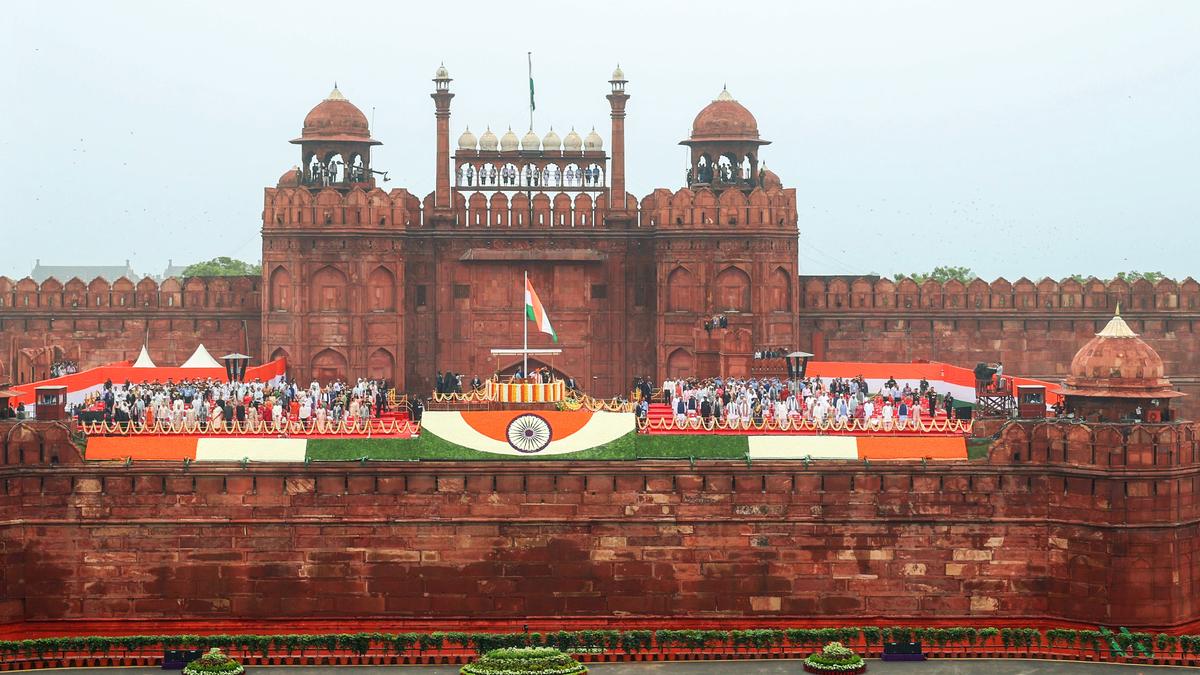
Elemental analysis showed that heavy metals such as titanium, nickel, copper, zinc, barium, and lead are present in much higher concentrations in the black crust, which are deposits from external pollution sources like construction activities, road dust, and emissions from cement factories.
| Photo Credit: FILE PHOTO
A ‘black crust’ is forming on the walls of the Red Fort due to high levels of air pollution, a recent study has found.
The study, titled ‘Characterization of Red Sandstone and Black Crust to Analyze Air Pollution Impacts on a Cultural Heritage Building: Red Fort, Delhi, India’,analysed the red sandstone used in the structure and samples of black crust.. Researchers concluded the black crust “is probably a result of atmospheric deposition linked to pollution.”
The researchers collected a limited number of samples from the Red Fort’s fortification wall and Zafar Mahal, focusing on both degraded areas with visible black crusts and non-degraded red sandstone. Elemental analysis showed that heavy metals such as titanium, nickel, copper, zinc, barium, and lead are present in much higher concentrations in the black crust, which are deposits from external pollution sources like construction activities, road dust, and emissions from cement factories.
Regarding conservation, the study pointed that preventive conservation measures can help slow down the crust formation. “The formation of a black crust is a progressive phenomenon that usually begins with a thin black layer or deposit, which can be removed without significantly damaging the stone’s integrity, at least in the early stages.” It recommended a maintenance cleaning program for the most affected areas and the application of stone protectives to prevent or at least slow down the formation of the black crust
Published – September 16, 2025 01:38 am IST

